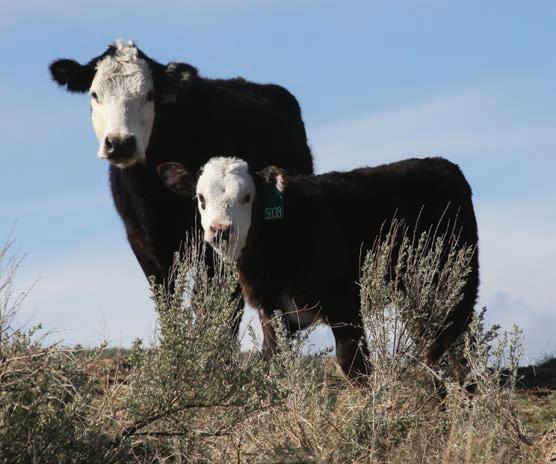
1 minute read
Preventing hypothermia and caring for chilled calves
BY JOHN B. HALL, PH.D. Extension Beef Specialist University of Idaho
Winter and early spring calving in Idaho results in many challenges. Although not the ideal time to calve based on weather and forage, it is often the most appropriate time for many cow-calf operations. Whether your outfit is a seedstock operation trying to create older yearling bulls for market or a commercial operation wanting calves to be old enough to go to public lands in May, cold weather calving might be the option.
Advertisement
Prevention
Guarding against hypothermia in calves starts before birth. Cows in the last trimester of pregnancy need sufficient protein and energy to ensure calves have enough fat reserves and energy. Cows require at diet that is 7 to 8 % crude protein and 54% total digestible nutrients (TDN). The only way to know for sure is to test the hay being fed for nutrient content. Cows on winter range will need protein supplementation. A cow’s diet can have a huge effect on calf vigor and ability to resist cold. Calves from cows that calve in body condition score 5 or 6 get up faster and nurse sooner that calves from thin cows (Table 1). Calves that nurse more quickly are less susceptible to hypothermia.
Getting and keeping calves as dry as possible will prevent hypothermia. The combination of a good mother licking off the coat and the calves own body heat result in a dry coat under favorable conditions. Making sure calves are well cleaned off can prevent frostbite to ears, feet and tails. Often calves born to heifers need extra drying as these young moms often miss critical spots.
Identifying Chilled Calves
However, winter calving can result in chilled calves. Severely cold temperatures, high wind speeds (wind chill) and/or snow, sleet or rain will increase the incidence of hypothermic calves. Knowing the signs of hypothermia are critical to proper treatment and care (Table 2).
Newborn calves are the most susceptible to hypothermia as they are emerging wet into a cold environment. However, calves up to 48 hours old are not able to regulate their body temperature well. Therefore, a severe temperature drop, or high amounts of moisture can be dangerous to calves 1 to 2 days old.
Cold stress prevention after calving is more obvious. Bedding to break contact with the cold ground, erecting windbreaks and judicious use of calving barns are good options. Calf shelters can help, but they can also become a pathogen pit resulting in calf scours. Calf blankets are often used in dairy operations and some Canadian operations.
Treating Chilled Calves
The key to treating hypothermia is to get calves into a warm environment and dry. Many methods are effective in warming calves. By the floorboard heater in the truck, by the wood stove in the house, calf warming boxes and warm water









